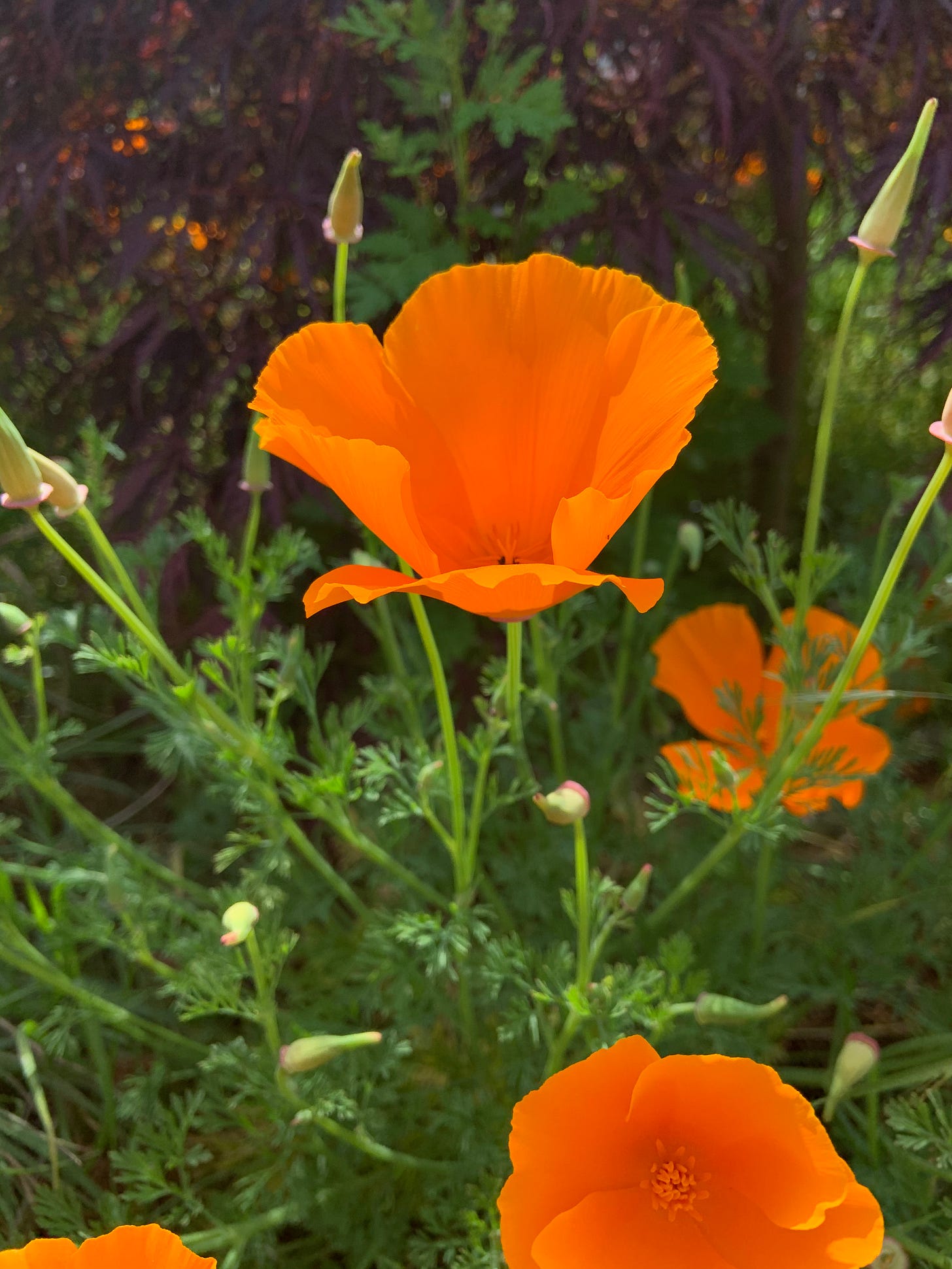Lately, towards the end of my drive home when I arrive on the ridge in Seattle where I live, immediately the colors of blossoming plants explode in my vision. I feel like Dorothy arriving in Technicolor Oz, coming from shades of grey Kansas. Maybe it’s from being on the edge of downtown in a modern office building all day, but the colors are so vibrant and noticeable this year. The rhododendrons and irises are in their glory now, a rainbow of shades spreading across the gardens and yards in the neighborhood. Roses are blooming, peonies are popping, lilacs are fragrant, with many other flowers at their peak. When I come across a patch of California poppies, that particular shade of orange seems impossible to me. It is almost too much for my eyes to take in. Later, on our neighborhood walks, we see things up close and my vision still shimmers with the colors.
Spring in Seattle is glorious, lasting from February to June. The payback for the gray, chilly weather which we are still living with, until at least the 5th of July. “Junuary” is coming next week. We are still in sweaters and long pants. But the days are long and the flowers inspiring.
Just like this city, when it comes to how we weathered the pandemic. And how we have increased our vaccinations- 76% of eligible have received at least one vaccine and 60% have been fully immunized. The mass vaccination sites are closing soon due to lack of need.
COVID-19 cases and deaths have fallen to their lowest levels since last June. But still 1758 cases and 19 deaths were reported in the state yesterday, with only 105 cases in King County and 2 deaths on May 25 in the largest county in the state. Infections and illness are still happening in areas with low vaccination rates. If you can, look at this Washington Post graphic that shows the different infection rates compared to vaccination rates. Infections and deaths are still high in unvaccinated people. Unvaccinated seniors are 11 times more likely to be hospitalized than those that get the shot.
People and regions are being left behind. True, many are making the choice, often based on false information. This is troubling and I don’t know the answer. Mostly, I feel incredibly lucky and privileged. Much of the world is also left behind, but not because of choice and skepticism. Lack of access to vaccines is a factor. I have heard talk now of the US sending vaccines to developing countries if they will not be used here. Sharing vaccines is a good idea because our economy cannot recover without the rest of the world. We are all interdependent, we need each other to grow, like a healthy garden.
Wash your hands, cover your nose (unless everyone is vaccinated and not immunocompromised) and look for the flowers.
And finally, my caveat is that this is my experience and my opinions, which are subject to change as more information is available, and not related to the organization I work for. Thanks for reading.
https://www.seattletimes.com/seattle-news/health/city-of-seattle-to-close-all-but-one-of-its-covid-vaccination-sites-including-at-lumen-field/
https://www.seattletimes.com/seattle-news/health/coronavirus-daily-news-updates-may-26-what-to-know-today-about-covid-19-in-the-seattle-area-washington-state-and-the-world/
https://www.washingtonpost.com/health/interactive/2021/covid-rates-unvaccinated-people/
https://www.nytimes.com/2021/05/23/us/covid-cases-vaccinations-united-states.html
https://ourworldindata.org/grapher/covid-vaccine-willingness
https://ourworldindata.org/covid-vaccinations



